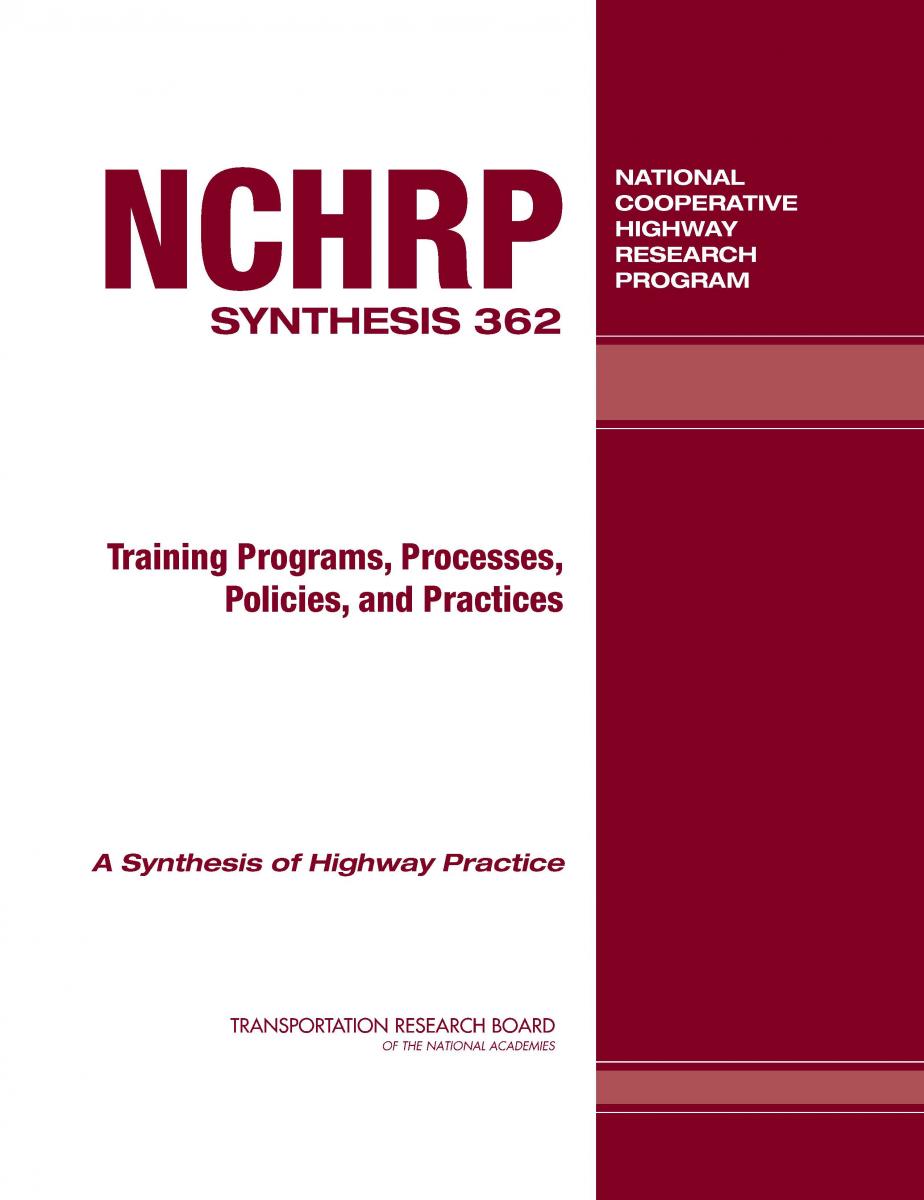Overview
 This synthesis of practice focuses on the program components required by a DOT to have a sound set of policies, processes, and procedures for planning, developing, implementing, funding, and evaluating state DOT training, development, and education programs. It does not focus on specific DOT training needs, courses, and competencies. The report discusses:
This synthesis of practice focuses on the program components required by a DOT to have a sound set of policies, processes, and procedures for planning, developing, implementing, funding, and evaluating state DOT training, development, and education programs. It does not focus on specific DOT training needs, courses, and competencies. The report discusses:
- Challenges with maintaining a knowledgeable workforce
- Essential components of an effective training program
- Experiences from state DOTs
- Successful practices from business and government
The research finds that most DOTs have a strategic or business plan with measurable goals and outcomes and have identified some or all of the competencies required in the workforce to accomplish the identified goals and outcomes. However, fewer than half noted that they had assessed the competency level of the workforce, and even fewer have well-developed and implemented succession plans for occupations at any level of the organization. Most agencies are evaluating the quality of their program and the learning that takes place, but these outcomes are not, in turn, linked to requests for or distribution of funds. Successful companies in the private sector are known to do this, and DOTs would benefit from adopting this approach. However, substantial executive leadership and attention will be required to move these programs to the next level of strategic alignment: direct involvement in setting strategic direction for training programs, enforcement of accountability, and bestowing a greater perception of “value added” to training and development activities.
The findings are based on a literature review, survey results from 24 states, follow-up telephone calls, and a focus group convened at the 2005 state DOT training directors’ annual conference. Interviews with a variety of public and private sector thought leaders in public administration, transportation, training, development, and education provided additional insights.